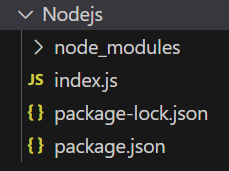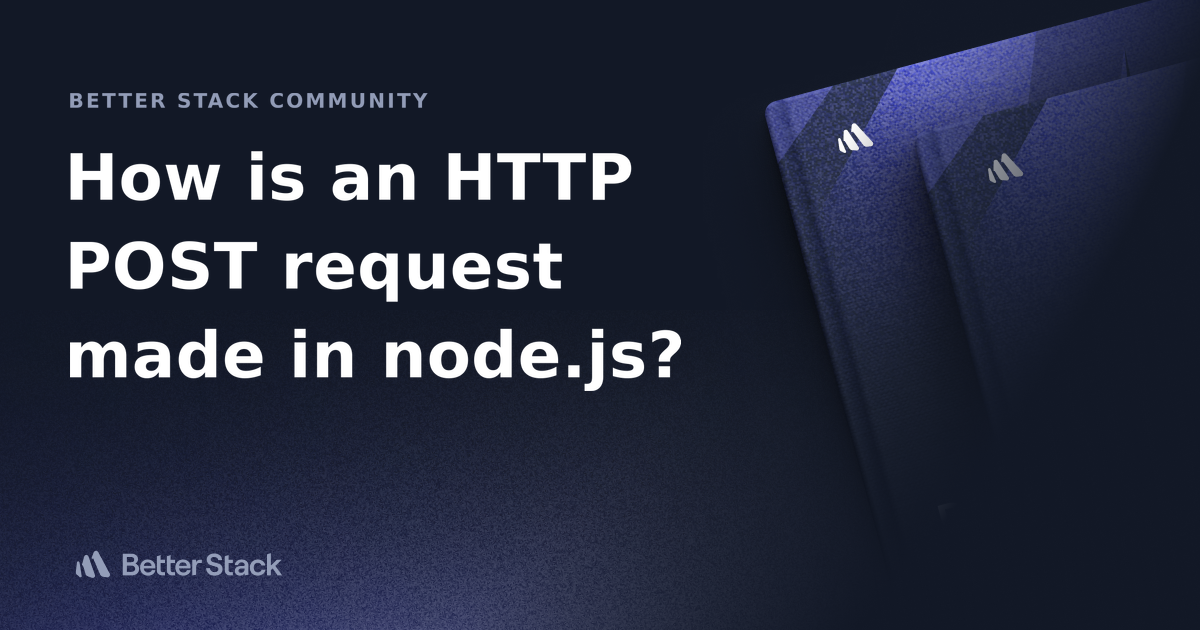Node.js POST Requests: A How-To Guide
This article provides a step-by-step guide to making HTTP POST requests in Node.js, using built-in modules and popular third-party libraries for efficient server communication.
This article provides a step-by-step guide to making HTTP POST requests in Node.js, using built-in modules and popular third-party libraries for efficient server communication.
http or https Moduleaxios Libraryhttps Moduleaxios LibraryThis guide will explain how to make HTTP POST requests in Node.js using two common methods: the built-in modules (http or https) and the axios library. Each method has its own benefits and use cases, which will be discussed to help you choose the best option for your needs.
There are several ways to make HTTP POST requests in Node.js, each with its own advantages and use cases. Here, we'll explore two popular methods: using the built-in http or https modules and using the axios library.
const https = require('https'); // Use 'http' for non-secure connectionsconst options = {
hostname: 'your-api-endpoint.com',
port: 443, // Use 80 for non-secure connections
path: '/your-api-path',
method: 'POST',
headers: {
'Content-Type': 'application/json', // Set appropriate content type
},
};const data = JSON.stringify({
// Your data object here
});const req = https.request(options, (res) => {
console.log(`statusCode: ${res.statusCode}`);
res.on('data', (d) => {
process.stdout.write(d);
});
});
req.on('error', (error) => {
console.error(error);
});
req.write(data);
req.end();Explanation:
https module for secure connections (use http for non-secure).https.request and provide a callback function to handle the response.error event.axios library:npm install axiosconst axios = require('axios');axios.post('https://your-api-endpoint.com/your-api-path', {
// Your data object here
})
.then(response => {
console.log(response.data);
})
.catch(error => {
console.error(error);
});Explanation:
axios library.axios.post method, providing the URL and data object as arguments.axios returns a promise, so we use then to handle the successful response and catch to handle errors.Advantages of axios:
http or https module for more control over the request and response or when working with low-level network protocols.axios for a simpler and more convenient way to make HTTP requests, especially when working with JSON data.Remember to choose the method that best suits your needs and coding style.
This code demonstrates two ways to make HTTP POST requests in Node.js. The first method uses the built-in https module and involves setting options like hostname, port, path, method, and headers. It then makes the request, handles the response data, and logs it. The second method uses the axios library, which simplifies the process with a more concise syntax. It directly posts data to the specified URL and handles the response or error using promises. The choice between the two methods depends on the desired level of control and complexity.
Following your provided guide, let's craft some practical JavaScript examples for making HTTP POST requests using both the built-in https module and the axios library.
const https = require('https');
const data = JSON.stringify({
name: 'John Doe',
message: 'This is a test message',
});
const options = {
hostname: 'your-api-endpoint.com',
port: 443,
path: '/api/v1/messages',
method: 'POST',
headers: {
'Content-Type': 'application/json',
'Content-Length': data.length,
},
};
const req = https.request(options, (res) => {
console.log(`statusCode: ${res.statusCode}`);
let responseData = '';
res.on('data', (d) => {
responseData += d;
});
res.on('end', () => {
console.log('Response Data:', responseData);
});
});
req.on('error', (error) => {
console.error(error);
});
req.write(data);
req.end();Explanation:
https module for secure communication.const axios = require('axios');
const data = {
name: 'John Doe',
message: 'This is a test message',
};
axios.post('https://your-api-endpoint.com/api/v1/messages', data)
.then(response => {
console.log(response.data);
})
.catch(error => {
console.error(error);
});Explanation:
axios library.axios.post is used with the API URL and data object.then for successful responses and catch for errors.As the guide suggests, the choice between https and axios depends on your needs:
https: Offers more control and flexibility, suitable for complex scenarios or low-level network operations.axios: Provides a simpler and more concise syntax, ideal for quick API interactions and JSON data handling.Remember to select the method that aligns best with your project requirements and coding preferences.
Error Handling:
.catch()) to gracefully handle errors and prevent application crashes.Security Considerations:
Performance Optimization:
Testing and Debugging:
Additional Libraries and Tools:
node-fetch, request, or superagent, each offering different features and abstractions.| Method | Description | Advantages | Disadvantages |
|---|---|---|---|
http/https Module |
Built-in module for handling HTTP/HTTPS requests. Requires manual configuration of options, headers, and data. | More control over low-level details. | More verbose and requires more code. |
axios Library |
External library for making HTTP requests. Offers simpler syntax and automatic JSON handling. | Easier to use, cleaner code with promises. | Less control over low-level details. |
In conclusion, making HTTP POST requests in Node.js is essential for interacting with APIs and sending data to servers. This guide explored two primary methods: using the built-in http or https modules and using the axios library. The http or https modules provide more control and flexibility, making them suitable for complex scenarios or low-level network operations. On the other hand, axios offers a simpler and more concise syntax, ideal for quick API interactions and JSON data handling.
The choice between these methods depends on your specific needs and preferences. If you require fine-grained control over the request and response, the built-in modules are a good option. However, if you prefer a more streamlined approach with automatic JSON handling, axios is an excellent choice.
Remember to implement proper error handling, security measures, and performance optimizations to ensure your HTTP POST requests are robust, secure, and efficient. Additionally, explore other HTTP client libraries and tools available in the Node.js ecosystem to find the best fit for your project requirements.
 A Complete Guide to Making HTTP Requests in Node.js ... | This article will discuss more on HTTP, HTTP requests, ways to make this requests in Node and how we can handle errors.
A Complete Guide to Making HTTP Requests in Node.js ... | This article will discuss more on HTTP, HTTP requests, ways to make this requests in Node and how we can handle errors. HTTP | Node.js v21.7.3 Documentation | request.setNoDelay([noDelay]) ... made when a new HTTP request is made for that host and port. ... If one needs to upload a file with a POST request, then write to ...
HTTP | Node.js v21.7.3 Documentation | request.setNoDelay([noDelay]) ... made when a new HTTP request is made for that host and port. ... If one needs to upload a file with a POST request, then write to ... HTTP post request from node.js in AWS Lambda | by Hamza ... | Discussing a native way of performing HTTP post request from node.js by utilizing the http/s module.
HTTP post request from node.js in AWS Lambda | by Hamza ... | Discussing a native way of performing HTTP post request from node.js by utilizing the http/s module. How HTTP POST requests work in Node ? - GeeksforGeeks | A Computer Science portal for geeks. It contains well written, well thought and well explained computer science and programming articles, quizzes and practice/competitive programming/company interview Questions.
How HTTP POST requests work in Node ? - GeeksforGeeks | A Computer Science portal for geeks. It contains well written, well thought and well explained computer science and programming articles, quizzes and practice/competitive programming/company interview Questions. How is an HTTP POST request made in node.js? | Better Stack ... | Better Stack lets you see inside any stack, debug any issue, and resolve any incident.
How is an HTTP POST request made in node.js? | Better Stack ... | Better Stack lets you see inside any stack, debug any issue, and resolve any incident. 5 ways to make HTTP requests in Node.js - LogRocket Blog | Make HTTP requests in Node.js using the native module as well as npm packages like Axios, Got, SuperAgent, and node-fetch.
5 ways to make HTTP requests in Node.js - LogRocket Blog | Make HTTP requests in Node.js using the native module as well as npm packages like Axios, Got, SuperAgent, and node-fetch.